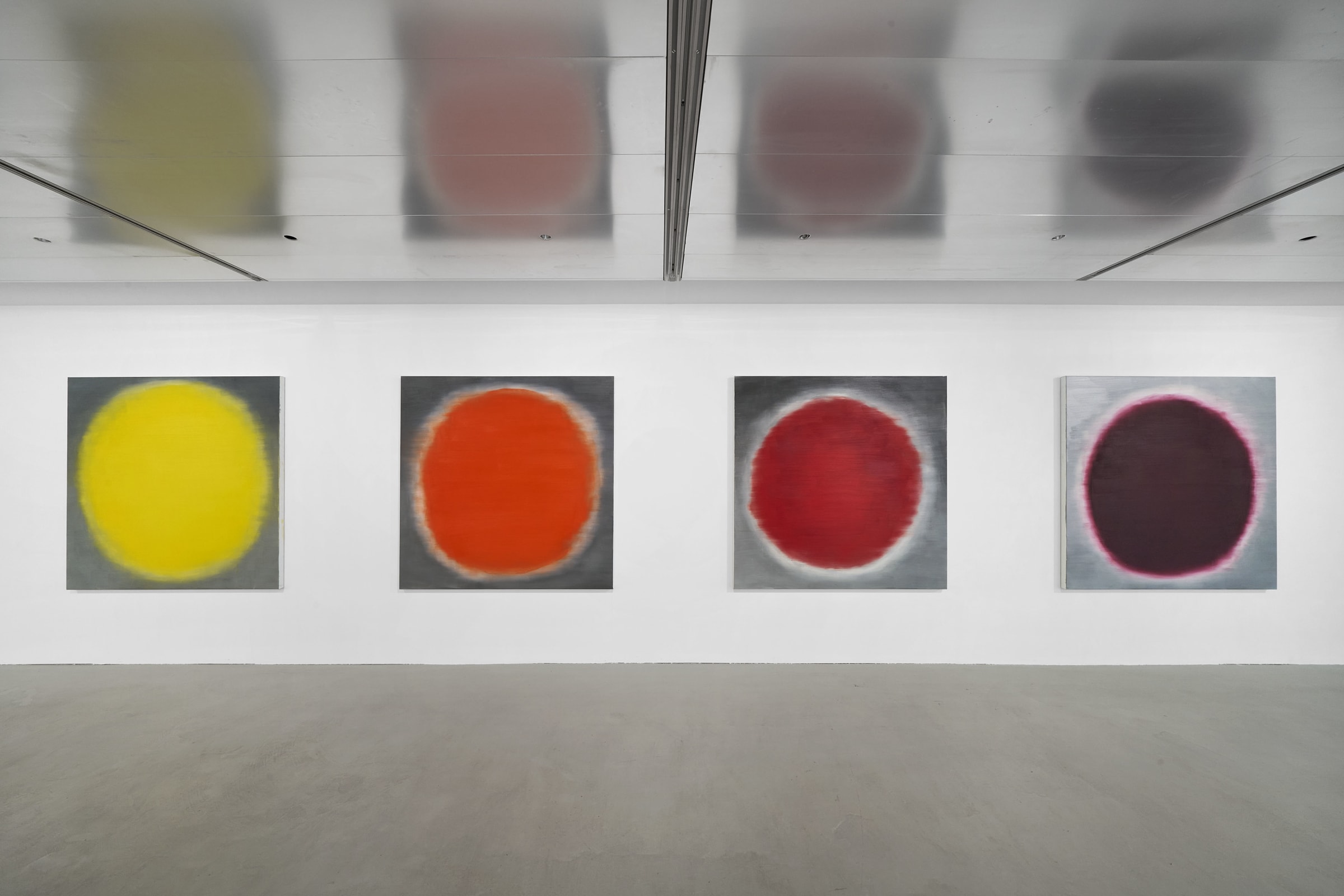Ross Bleckner: It Used To Be
-
-

Ross Bleckner
Unend, 2025Oil on canvas
304.8 x 213.4 cm
120 x 84 inches -
Capitain Petzel is pleased to announce It Used To Be, Ross Bleckner’s second solo exhibition with the gallery.
The title of the exhibition implies a contemplation of things past and transitory states – what lingers at the threshold between form and void, presence and absence, of what used to be. It primes us for an experience that is at once elegiac and reflective, exemplary of the artist’s delicate approach to painting and the construction of images.
-
-

-

-
Bleckner often treats organic forms with an optical softness, blurring their edges until they seem to hover in light. These motifs appear as distilled essences, rather than literal studies. Plants in his work often dissolve into luminous bodies or patterned repetitions, their physical specificity replaced by an atmospheric presence. Rain, when it emerges, tends to take on the form of vertical drips, scattered droplets, or hazy veils of paint.
Georgia O’Keeffe famously insisted that her floral paintings were about the flower itself, not encoded symbolism, despite widespread interpretation. Bleckner, similarly, abstracts floral forms until they become apparitions – vehicles for memory, loss, and light. He layers paint, erases, and builds surfaces that retain the ghost of form yet evoke something spectral, symbolic, and deeply emotional.
-

Ross Bleckner
Vase and Flower, 2025Oil on canvas
183 x 183 cm
72 x 72 inches -
-

-

-
The main thing for me is how the image is disembodied, almost vaporized, into this continuous pulsating glow that emanates from something.
- Ross Bleckner
-
-

-
Over time, Bleckner’s visual language has evolved, while remaining committed to the exploration of human vulnerability and transformation. His more recent works continue to use abstract forms and ethereal light effects to convey a sense of otherworldliness through reduced composition, where a single body hovers on a monochrome background, as in his recent Sunset paintings.
-

-
-

-
To this day, Ross Bleckner is the youngest artist to receive a retrospective at the Solomon R. Guggenheim Museum, at the age of 45. The artist’s recent exhibitions include the Neues Museum Nürnberg; San Francisco Museum of Modern Art; Martin Gropius Bau, Berlin; Museo Reina Sofía, Madrid; L.A. County Museum, Los Angeles; Kunstmuseum Luzern; and Zentrum Paul Klee, Bern.
His paintings can be found in numerous major museum collections, such as the Museum of Modern Art, New York; Whitney Museum of American Art, New York; Museum Boymans-van Beuningen, Rotterdam; Astrup Fearnley Collection, Oslo; Sammlung Goetz, Munich; Museo Nacional Thyssen-Bornemisza, Madrid; Museo Reina Sofia, Madrid.
-

-

-
-

-
In the exhibition, we encounter an array of canvases, both monumental and intimate in terms of format. This dense display of images can be seen as a cross-section of Bleckner’s practice, which treats the canvas almost like a space for meditation, allowing the viewer to immerse themselves in luminous fields and reflective surfaces. Here abstraction is used to intensify emotional experience, and viewers are drawn into Bleckner's compositions, which shimmer and dissolve, much like experience itself.
-

Ross Bleckner
Waterfall from Heaven, 2025Oil on canvas
243.8 x 304.8 cm
96 x 120 inches -

-
-

-

-
-

Ross Bleckner
Walk, 2025Oil on linen
182.9 x 213.4 cm
72 x 84 inches -
-

-
Request more information



















